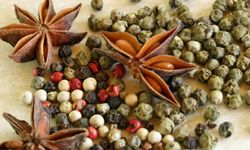If you want to create an authentic Chinese dish, you have to use authentic ingredients. Some recipes will suggest substitutions, like using black pepper instead of Szechuan peppercorns or employing allspice in place of five-spice powder, but using the real thing makes a big difference. Although Chinese spices and sauces are usually used in small amounts to enhance recipes, they offer subtle flavor, depth and sometimes a unique kick that you can't get from anything else.
If you're thinking of stocking your kitchen with a few Chinese cooking essentials, most of the seasoning staples you'll need will keep for a long time and can be mixed, matched and used in lots of different Chinese recipes. Keep reading to learn more about the 10 spices and sauces we think are crucial to the art of Chinese cooking.
Advertisement




